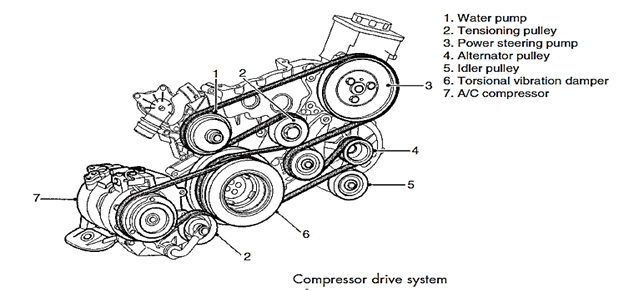The Air-conditioning System
Introduction:
The signal to activate the air-conditioning system comes from the occupant. Activation of the air-conditioning system is achieved under some specific conditions.
System activation
Activation is completed by the onboard Electronic Control Unit (ECU).The ECU has a number of inputs which send electronic signals based on sensed conditions, e.g. temperatures, pressures, speeds, positions.Based on this information the ECU will either activate or deactivate (if already operating) the system. If the system does not activate then a fault in the form of a code will be stored in the computer and on some systems a light will be activated to tell the driver a fault exists.Advanced systems may use telematics to send a signal to a call centre.Operators at the centre will advise the customer of the required action, i.e. urgency on visiting a dealership, often via telephone.
Activation of the air-conditioning system is achieved under some or all of the following conditions:
● the outside air temperature is above 9°C
● the engine has been running for more than 5 seconds
● the temperature of the evaporator is above 4°C (no ice forming over the surface)
● the engine coolant temperature is approximately between 40°C and 105°C
● the vehicle is not rapidly accelerating or the engine is under high load (overtaking etc.)
● the air-conditioning activation button has been selected and the interior fan is on.

The sensors in the air-conditioning system have acknowledged that the system is under pressure assuming that a quantity of refrigerant exists inside the system and that it has not leaked out to the atmosphere (sensed by either pressure switches or sensors).
● No fault codes exist in the ECU.
Simple electronic circuit
- Upon activation current flows from the vehicle battery through fuses, switches fitted to the A/C system and often an A/C relay to a magnetic clutch.
- The A/C relay is generally controlled by an onboard computer, which makes the ultimate decision to allow the A/C system to be activated based on system integrity, that is, the system has no faults and conditions are right for system activation.
- The clutch is positioned behind the compressor pulley and once activated will make a physical connection between the compressor pulley, which is driven by the engine, and the internal pumping elements.